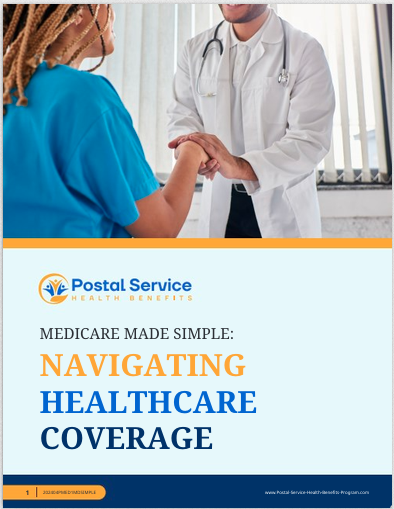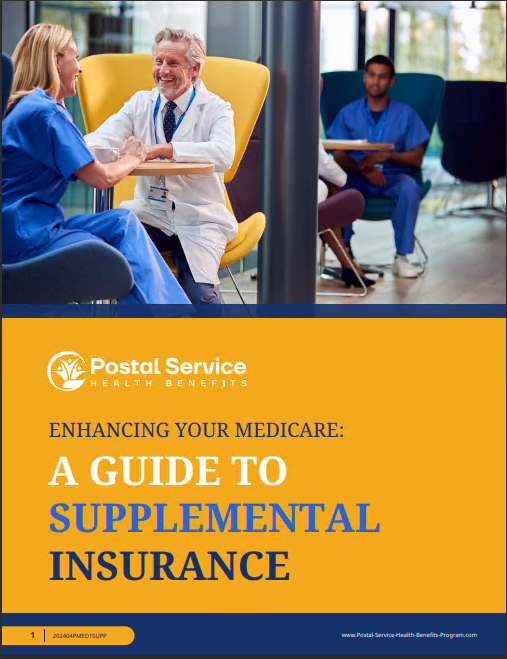Key Takeaways
- The Postal Service Health Benefits (PSHB) program is set to replace the Federal Employees Health Benefits (FEHB) program for USPS workers, offering a new set of healthcare benefits.
- USPS employees and retirees need to understand the upcoming changes, as the PSHB program will significantly impact healthcare coverage.
PSHB Program: The Health Plan Overhaul Postal Workers Have Been Waiting For
As the U.S. Postal Service (USPS) navigates a changing healthcare landscape, its employees and retirees will soon experience a major transformation with the introduction of the Postal Service Health Benefits (PSHB) program. Set to take effect in January 2025, the PSHB will replace the Federal Employees Health Benefits (FEHB) program for postal workers, promising significant adjustments to health coverage that will impact both active employees and retirees. USPS workers must stay informed about these changes to ensure they are prepared to make the best decisions for their healthcare.
Understanding the PSHB Program
The PSHB program was established as part of the Postal Service Reform Act of 2022, designed to improve the financial stability of the USPS while addressing its workers’ healthcare needs. One of the key objectives of this reform is to create a separate healthcare program exclusively for USPS employees, retirees, and their dependents. This overhaul was necessary to ensure that the USPS could maintain its operations without the financial strain of contributing to the larger FEHB pool, which includes a wide range of federal employees.
Under the PSHB, all USPS workers and retirees will transition from the FEHB program, which they have traditionally used, to the new system. This shift will affect both current employees and those who have already retired, making it essential for all USPS members to stay informed about what this transition entails.
Key Changes USPS Workers Should Know
One of the biggest changes USPS employees and retirees will face is the new structure of the PSHB program. This program is separate from the FEHB, meaning that postal workers will no longer share a health benefits plan with other federal employees. While this provides USPS members with plans more tailored to their specific needs, it also requires them to reevaluate their health coverage options carefully.
Some key features of the PSHB program include:
- PSHB-exclusive Plans: Unlike the FEHB, which offers a variety of plans for all federal workers, the PSHB will provide health plans that are specifically designed for postal employees and retirees.
- Medicare Integration for Retirees: One of the significant reforms in the PSHB is how it integrates with Medicare. Retirees who are eligible for Medicare will be required to enroll in Medicare Part B to continue receiving their PSHB benefits. This mandatory enrollment ensures better coordination between Medicare and the PSHB, potentially lowering out-of-pocket costs for retirees.
- Transition Period: USPS employees and retirees will have a transition period to switch to the PSHB program, ensuring they have ample time to understand their options and select the best plan for their needs.
Why Was the PSHB Program Created?
The creation of the PSHB program was driven by both financial and healthcare concerns. The USPS has been facing financial challenges for years, with rising healthcare costs being one of the contributing factors. As part of the Postal Service Reform Act, the PSHB program was designed to relieve some of this financial burden by creating a healthcare system that is specifically tailored to the needs of postal workers. By separating USPS employees from the larger FEHB pool, the PSHB can offer more targeted and cost-effective coverage.
Additionally, the PSHB aims to address the unique healthcare requirements of postal employees, many of whom have physically demanding jobs. USPS workers often face health risks related to repetitive motions, long hours on their feet, and exposure to the elements, which require specialized healthcare plans.
What Does Medicare Integration Mean for Retirees?
For USPS retirees, the integration of Medicare into the PSHB program is one of the most significant changes. Under the PSHB, retirees who are eligible for Medicare will need to enroll in Medicare Part B to maintain their health benefits. This requirement has raised concerns among some retirees, particularly those who have been relying solely on their FEHB plans and have not enrolled in Medicare Part B.
The purpose of this integration is to coordinate benefits between Medicare and the PSHB program, which could potentially lower healthcare costs for retirees. With Medicare Part B covering certain medical services, the PSHB plans will cover other services, reducing out-of-pocket expenses for enrollees. Retirees who do not enroll in Medicare Part B may face higher healthcare costs or lose access to some benefits under the PSHB.
How to Prepare for the PSHB Transition
For USPS workers and retirees, the transition to the PSHB program represents a significant shift in their healthcare coverage. To prepare for this change, it is crucial to take proactive steps to understand how the new program will affect individual healthcare needs. Here are a few tips to help you get ready:
-
Stay Informed: Make sure you keep up-to-date with the latest information about the PSHB program. USPS employees and retirees will receive notifications about important deadlines, plan options, and Medicare requirements. Read all communications carefully to avoid missing out on key details.
-
Evaluate Your Current Healthcare Needs: Before making any decisions about switching to the PSHB, take the time to assess your current healthcare needs. Consider factors such as your medical history, ongoing treatments, and any medications you require. This will help you select the best PSHB plan for your situation.
-
Understand Medicare Requirements: If you are a retiree approaching Medicare eligibility, it is important to understand how the PSHB program integrates with Medicare. Be prepared to enroll in Medicare Part B if necessary to maintain your health coverage under the new system.
-
Seek Assistance if Needed: Navigating the transition to the PSHB program can be complicated, especially if you are not familiar with Medicare or health benefits programs. If you need help understanding your options, don’t hesitate to seek advice from licensed insurance agents who specialize in federal employee benefits. They can provide guidance on how to make the most of your healthcare coverage under the PSHB program.
The Importance of Making the Right Health Plan Choices
As USPS workers and retirees prepare for the shift to the PSHB program, it is critical to recognize the importance of making informed health plan decisions. Choosing the right plan can have a long-term impact on your healthcare costs and access to medical services. While the PSHB offers USPS members health plans tailored to their needs, there may still be variations in coverage levels, network providers, and out-of-pocket costs.
To ensure you make the best choice, consider attending informational webinars or meetings hosted by USPS or consulting with a health benefits expert. By taking the time to carefully review the available plans, you can find the one that best meets your needs and budget.
Looking Ahead: What USPS Workers Can Expect
The rollout of the PSHB program is still on the horizon, but USPS employees and retirees should begin preparing now. The transition to this new healthcare system will bring changes that could affect everything from doctor visits to prescription coverage. By staying informed and actively participating in the decision-making process, USPS workers can ensure a smooth transition and continued access to quality healthcare.
While the PSHB program represents a major overhaul of USPS healthcare benefits, it also presents an opportunity for postal workers to take control of their health coverage. With plans designed specifically for their unique needs and the integration of Medicare for retirees, the PSHB program offers the potential for better-coordinated care and cost savings.
Preparing for a New Era in Postal Healthcare
The PSHB program is set to transform healthcare for USPS employees and retirees, creating a more tailored and efficient system. As postal workers prepare for this transition, it is essential to stay informed, evaluate healthcare needs, and understand how the program interacts with Medicare. With careful planning, USPS members can navigate these changes confidently and ensure they continue to receive the healthcare coverage they need.







